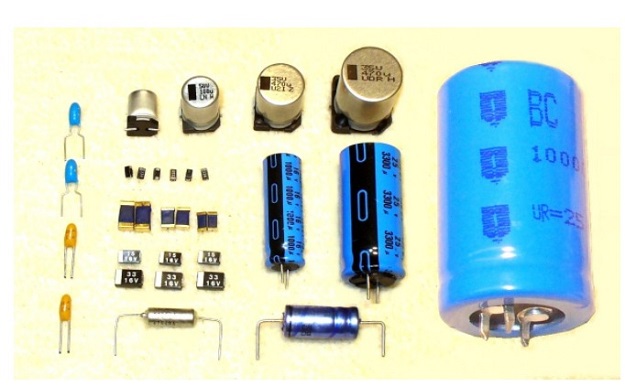This article aims at discussing a few things about electrolytic capacitors. We will outline the types, their properties as well as their uses.
What is an Electrolytic Capacitor?
An electrolytic capacitor is a capacitor that is polarized. Its anode possesses more, or higher positive voltage compared to its cathode. The electrolyte helps the capacitor to function this way. As a result, the symbol of the anode is a positive (+) sign while that of the cathode is a negative (-) sign.
Because the capacitor is polarized, it means the negative and positive ends should be connected appropriately. Any wrong connection can lead to malfunction, abnormality, or defect in the capacitor due to a breakage in its thin dielectric component. It can also result in a fire or an explosion. You may want to visit this website to get additional information on the definition of an electrolytic capacitor.
Must Read – Tips for Selecting a Reliable Electronic Component Provider
What Are the Types of Electrolytic Capacitors?
Depending on the kind of electrolyte and material used, an electrolytic capacitor is classified into 3 types.
1. Aluminum
The positive (anode) terminal of this type is made of aluminum foil that has an etching on its surface. The process of anodization results in a small oxide insulating layer, which performs the work of a dielectric.
Additionally, the cathode or negative terminal forms on the second part of the aluminum foil. The process involves an electrolyte (non-solid type) masking the coarse oxide layer.
2. Tantalum
It offers a very low current leakage and equivalent series resistance (ESR). The anode is a tantalum metal, enclosed in an oxide layer that works like a dielectric. It is wrapped further with a cathode that is conductive.
The tantalum capacitor is innately polarized and highly stable. When connected appropriately, it functions efficiently under an exceptional frequency.
3. Niobium Oxide
This type is like tantalum, but it uses niobium oxide in place of tantalum as the positive (anode) terminal. You can easily find niobium oxide because of its abundance and it offers exceptionally stable characteristics compared to tantalum metal.
Properties of Electrolytic Capacitors
Beyond the primary capacitive resistance and capacitance, the design of electrolytic capacitors involves various important parameters. It is, therefore, necessary to know the properties of these capacitors.
1. Equivalent Series Resistance (ESR)
The capacitors are usually applied in circuits where the level of current flowing through is quite high. They are also applied in areas where the current requires a low impedance source. A typical example is when they are used as reservoir capacitors in a circuit for power supply.
2. Leakage
Although these capacitors possess very high capacitance levels compared to most capacitor technologies, their leakage levels are high. For several applications, this does not pose any problem. However, they aren’t suitable for certain purposes. For instance, you cannot use them around an input circuit of a functional amplifier.
3. Frequency Response
Their frequency response is usually limited, which is a problem for certain applications. Their ESR increases with frequency, which limits their application to frequencies that are below an estimate of 100 kHz.
4. Tolerance
They have a wide range of tolerance. They may often have quotations as +80% and 20%. This is usually not a problem in applications like smoothing power supply or decoupling. But you should not use them in circuits that require an exact value.
5. Ripple Current
The ripple current capacitors will likely experience is particularly important. This is especially when you use them in applications that require high current like a power supply reservoir capacitor. Every capacitor has the highest ripple current it can supply.
Any value above that can make it very hot and reduce its lifespan. In extreme conditions, the capacitor may fail.
Uses of Electrolytic Capacitors
Since they are generally applied in circuits that require small frequencies, here are their uses:
# Provision of delay in time between 2 functions inside a circuit.
# Energy storage in applications that require low power.
# Signal coupling between different amplifier stages.
# Decoupling or noise filtering in the supply of power.
# Smoothing the output and input to filters.
# Voltage fluctuation reduction in a filtering device.
Conclusion
Electrolytic capacitors are known for their polarity. This implies that they always have a negative and a positive terminal. The negative side has a minus (-) sign while the positive side has a plus (+) sign. It is important to use them correctly to avoid fire outbreaks or explosions.

